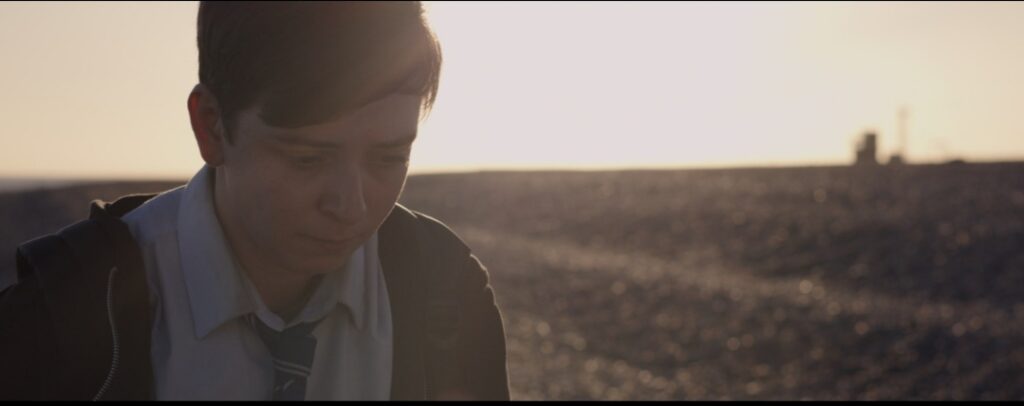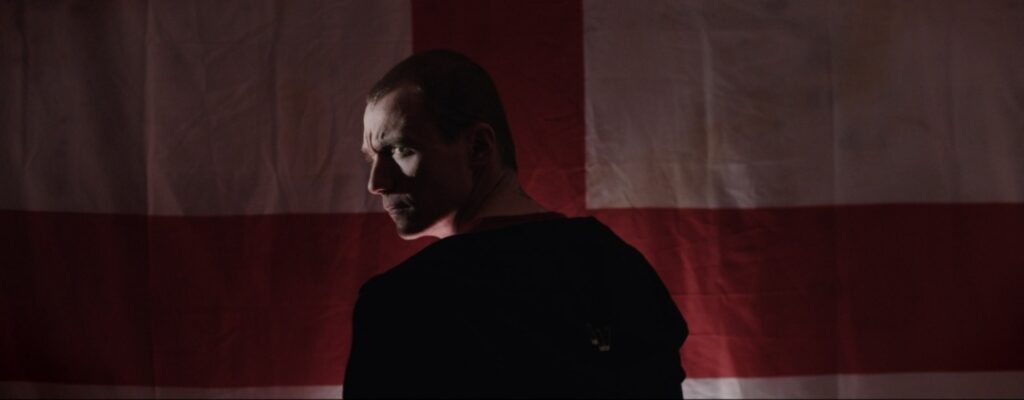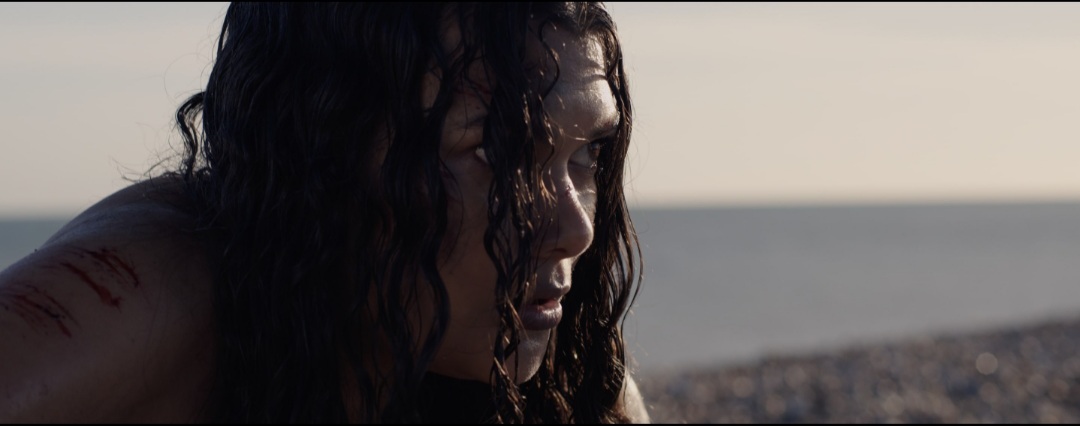Ill Fares The Land, written and directed by Patrick Ireland, is a startling and sinister fantasy-drama that addresses far right ideology in the United Kingdom and the country’s response and responsibilities to refugees. The film follows George (Noah Silverstone), who has been mute for the best part of two years, as he suffers between his abusive father (Mark Keegan) and his protective but increasingly vengeful brother, Trey (Ruaridh Aldington). Forced deeper and deeper into his brother’s twisted worldview, he discovers a mermaid (Smilla Erlandson) washed up on the beach. This encounter, on the edge of the expanse of the British Channel, wedges open empathy and complicates his small and suffocating world. Ill Fares The Land is a layered social critique that thrives in its depiction of the psychological weight of hatred and rage.

The film benefits from an ingenious premise. The combination of the harsh reality of the plight of refugees with the mythology of the sea is both fresh and disorienting. This encourages full attention, and a genuine investment in the development of the story. The film addresses an often spoken about topic in an interesting new way which should be commended. Ill Fares The Land finds a new visual language with which to depict the inhumane journeys of refugees, the unempathetic receptivity from the UK government, and a splitting English population in which some choose vitriolic forms of hatred and xenophobia—particularly when under financial, social and political duress.
The central performance from Silverstone, the majority of which is non-verbal, is thoroughly impressive. As George mimes his traumatic upbringing, and moves through his process of disillusionment in the present, there is a deep and silent sadness in his face as well as something bizarrely reverential in the way his eyes and body interact with the different environments. It is almost as if George, for the first time, is finding the will to act; the lost beauty in people, places and potential. But this journey is never fully complete and must be perpetually renewed. Other performances, particularly from Trey and his mates, help to contrast misplaced and brash outspokenness with George’s chronic introspection. In this sense, the film is not the most subtle, but certainly does enough to avoid caricature.

The film builds unease and uncertainty through its cinematography by Stephen Roach, and score by Magdalena Maria Herfurtner. It contrasts expansive natural landscapes with tight psychological spaces. The film’s use of jump cutting, focus and slow motion, which emphasizes blank moments of memory, particularly in circumstances of heightened emotions, is highly effective—bringing the viewer into the internal disorientation of George. There is also a superb use of underwater cinematography, in addition to the adept capturing of fields and beaches. The settings appear to go on endlessly around George as he walks around, zombie-like, in his state of psychological isolation. The score incorporates piano synths and a building chorus which approaches almost Gregorian style chanting. The indistinguishable voices that could be praising, crying out, singing or screaming, adds yet another dimension to the already immersive landscape.
Ill Fares The Land is a brutal film that refuses to domesticate or sanitize the reality of far right sentiment in the UK or the language used to carry the message. The film is alarming in its lack of empathy, right up until the last few moments. The film has fantasy elements, but majors in its largely realistic portrayal of grass roots racism and the effects of abuse. Ill Fares The Land is an innovative and bold tale of a broken and bordered land that leaves you with a tender plea—a gentle whisper—for a deeper, wider, truer version of benevolent humanity.


